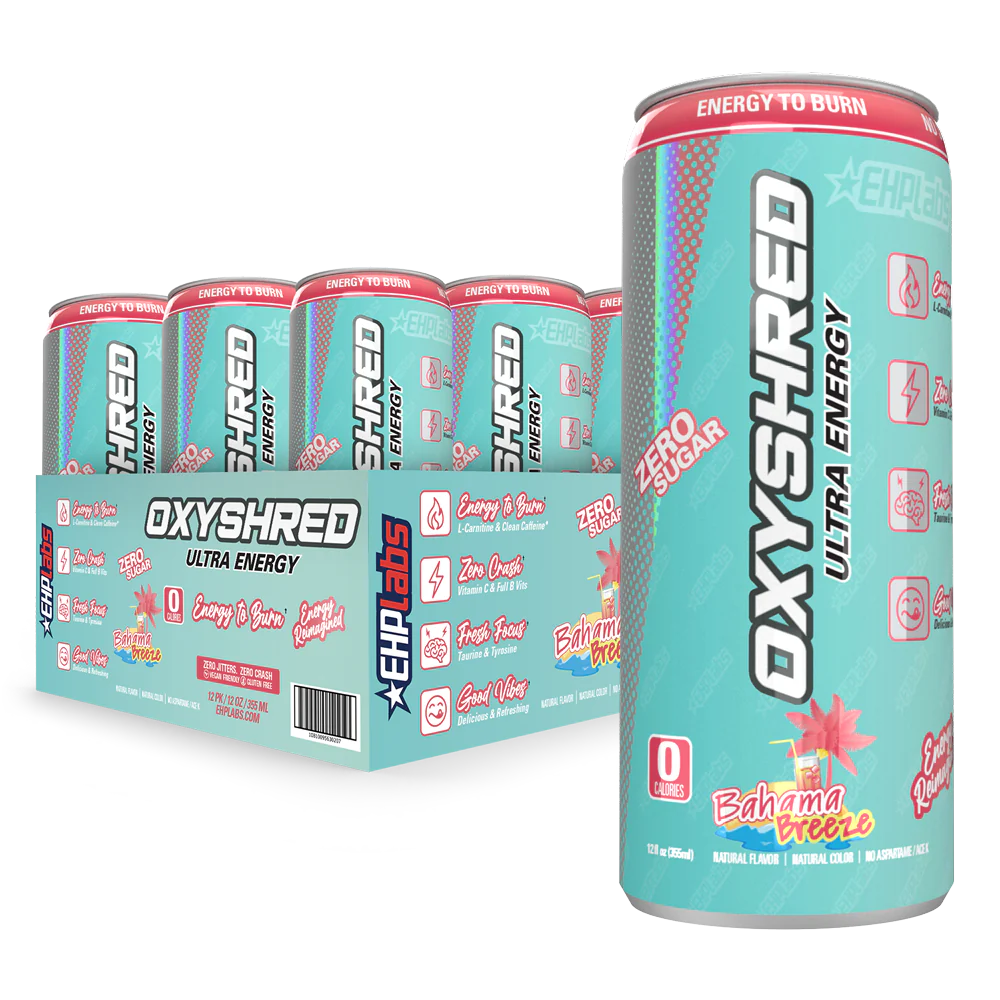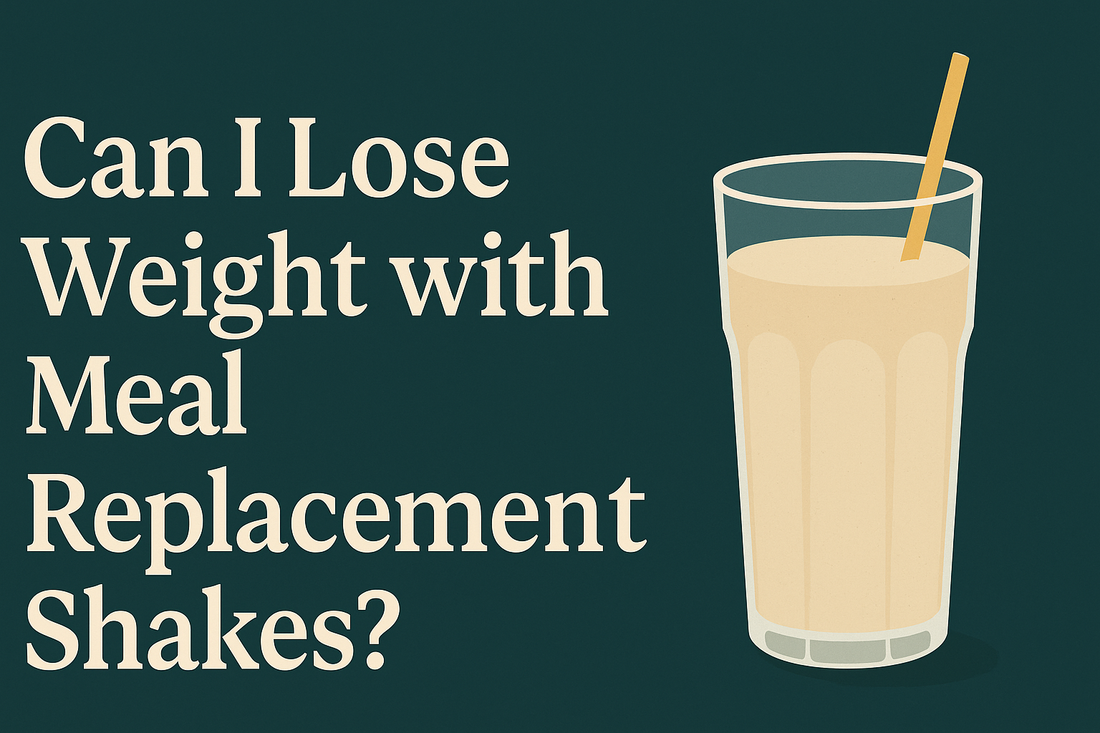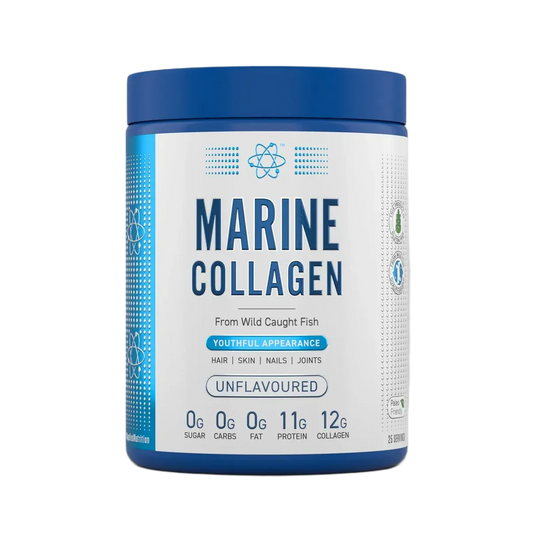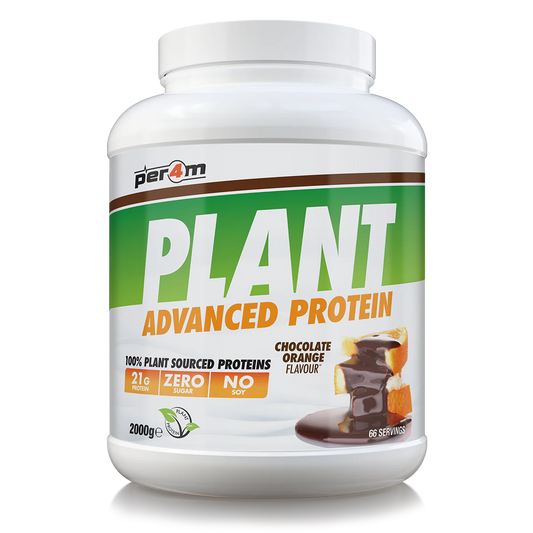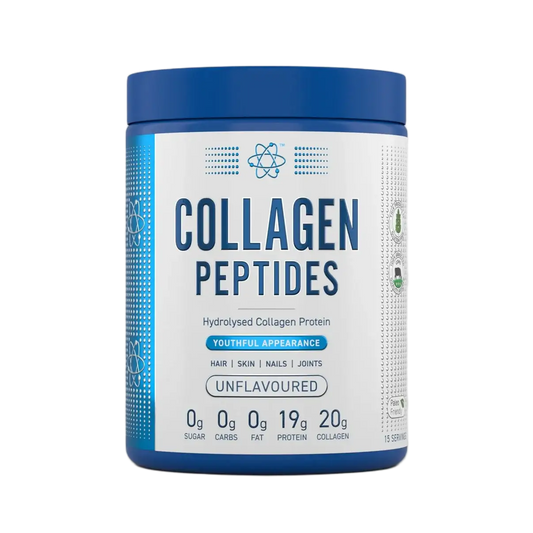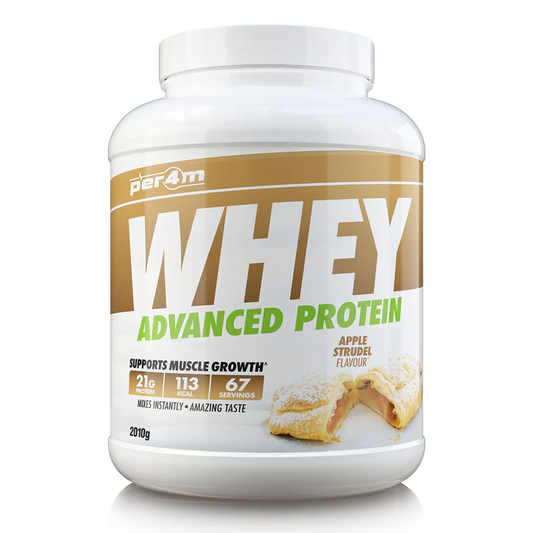Introduction
In a world obsessed with convenience and quick fixes, meal replacement shakes are having a major moment. From gym bags to desk drawers, these powdered potions are popping up everywhere—promising nutrition, simplicity, and yes, weight loss.
But here’s the big question: Do they actually work, or are we just drinking the diet industry’s latest rebrand?
This blog unpacks the science, the hype, and the hard facts about shedding pounds with shakes—so you can sip smarter. Whether you’re looking to drop a dress size or just hack your lunch hour, this is your evidence-backed, BS-free guide.
Can I Actually Lose Weight with Meal Replacement Shakes?
What They Are and How They Work
Meal replacement shakes are exactly what they sound like: drinks engineered to stand in for a full meal. They're designed to deliver a controlled mix of protein, carbs, fats, fiber, vitamins, and minerals—without the unpredictable calories or prep time of real food.
Most sit around 200–400 calories per serving, packing enough punch to curb hunger while slashing your total daily intake.
Calorie Deficit and Nutritional Balance: The Science Behind the Sip
Weight loss always boils down to one principle: calorie deficit—burning more than you consume. Shakes make this math easier by giving you consistent, portion-controlled meals. Plus, when done right, they provide balanced nutrition, helping you avoid the muscle loss, fatigue, and cravings that come with crash dieting.
Think of them as your diet’s autopilot—pre-measured, nutrient-dense, and almost foolproof.
Summary of Key Evidence
Studies support the effectiveness of shakes for weight loss. Participants in clinical trials who replaced one or two meals a day with a shake lost an average of 5–7% of their starting weight over a few months. That’s a meaningful drop—not just for your jeans, but for your heart, joints, and blood sugar too.
The key? Consistency, calorie awareness, and using shakes as a tool, not a crutch.
Can You Lose Weight Fast with Shakes?
Initial Results vs. Sustainable Loss
Yes, shakes can accelerate your early progress. Replacing one or two meals a day often creates a larger calorie deficit than traditional diets—and the results come quickly. Many users report losing 2–4 lbs in the first week alone.
But here’s the deal: fast doesn’t always mean forever. The initial drop is often water weight or reduced bloating. The real win is using shakes to build long-term habits, not short-term illusions.
What “Fast” Really Means in a Healthy Context
Let’s redefine “fast”: sustainable weight loss is about 1–2 lbs per week. It’s not headline-grabbing, but it sticks. Extreme drops often backfire—triggering rebound weight gain, hormone swings, or worse, total burnout.
Shakes can help kickstart your momentum—but they’re not a magic bullet. Think of them as a launchpad, not the whole rocket.
How Shakes Compare to Traditional Calorie Restriction
Traditional diets rely on meal planning, willpower, and portion control—all of which require serious effort. Shakes take the guesswork out. One scoop, one shake, one less decision to make.
And when used properly? They’re more consistent, less prone to portion creep, and better for busy schedules. That’s why they often outperform traditional approaches in early weight loss phases.
What’s the Best Shake for Weight Loss?
Criteria: High Protein, Low Sugar, Fiber Content
Not all shakes are created equal. Here’s what to look for on the label:
-
High protein (20g+): Keeps you fuller longer and helps preserve lean muscle.
-
Low sugar (under 5g): Avoid spikes and crashes.
-
At least 3g of fiber: Essential for digestion and satiety.
-
Added vitamins & minerals: To support overall nutrition, especially if replacing meals regularly.
Skip the glorified milkshakes masquerading as health food. If it tastes like dessert and is loaded with syrupy sweetness—it probably is.
Reflex Nutrition’s Complete Diet Protein – What Sets It Apart
Reflex Nutrition’s Complete Diet Protein checks all the right boxes. It’s not just about cutting calories—it’s engineered for real results. High in quality protein, low in sugar, and fortified with essential nutrients, it’s crafted to support weight loss without compromising health.
Plus, it’s formulated for daily use, which makes it a standout for anyone planning a consistent meal-replacement routine.
How to Evaluate Other Shakes
A good shake should feel like a mini meal, not a snack. Before you buy:
-
Scan the ingredients list—shorter is usually better.
-
Watch out for fillers like maltodextrin or artificial sweeteners in large quantities.
-
Check the calorie count—too low (<150 kcal) and you’ll be hungry in an hour; too high and you’ve missed the point.
In short: if you’re going to shake it, shake it smart.
Is It Safe to Drink a Shake Every Day?
Long-Term Safety and Nutritional Coverage
Yes—drinking a meal replacement shake daily is safe, effective, and for many, a game-changer. But it comes with a condition: the shake has to pull its nutritional weight.
That’s where Reflex Nutrition’s Complete Diet Protein stands out. It’s built for everyday use—with high-quality protein, complex carbs, essential fats, and a micronutrient profile that actually supports health, not just weight loss. You’re not cutting corners—you’re upgrading convenience.
Importance of Whole-Food Meals Alongside
Even with a gold-standard shake, you still need whole foods. Why? Whole foods provide crucial phytonutrients, diverse fibers, and chewing satisfaction that shakes can't replicate. Think of it like this: shakes give you structure; whole meals give you depth.
A healthy combo looks like this:
-
One meal with Complete Diet Protein (e.g., breakfast or lunch)
-
Two balanced whole-food meals rich in veggies, lean protein, and good fats
It’s a strategy that’s sustainable and actually enjoyable—not a liquid-only sentence.
Daily Use Recommendations
✔ Replace one meal a day
✔ Prioritize a shake that’s high in protein, fiber, and micronutrients
✔ Choose Complete Diet Protein—formulated with the right macros to support satiety, fat loss, and muscle maintenance, all with a taste that actually makes it easier to stay consistent
What Are the Side Effects?
Common Short-Term Effects (Bloating, Headaches, Acne)
Starting shakes? Expect some turbulence early on. Bloating, gas, or changes in digestion are common as your gut adjusts—especially if your diet lacked protein or fiber before. Some users also report headaches or breakouts, particularly when using low-quality, dairy-heavy shakes.
The fix? Choose a shake designed for digestion—not disaster.
Dairy vs. Non-Dairy Formulations
Many cheap shakes use low-grade dairy blends or overloaded sweeteners. That’s where Complete Diet Protein shines again. It’s made with high-quality milk protein, but balanced with digestive enzymes and low sugar content—a smarter formula that’s gentler on your gut and skin.
For sensitive stomachs or lactose issues, consider phasing in slowly or opting for a dairy-free alternative.
How to Reduce Risks: Choosing High-Quality Shakes
-
✅ Minimal artificial ingredients
-
✅ Natural sweeteners like stevia or sucralose, in moderation
-
✅ Balanced macronutrients and added fiber
Complete Diet Protein hits all the right notes: great taste, low sugar, high satiety, and fewer side effects—because quality ingredients don’t come with a catch.
Real Talk—How Much Weight Can I Lose in a Week?
Typical Weight Loss Range: 1–2 kg/week (2–4 lbs)
Let’s keep it 100: you can lose 1–2 kg (2–4 lbs) in your first week using meal replacement shakes, especially when swapping out two high-calorie meals and staying in a moderate calorie deficit.
Much of that will be water weight at first—but fat loss follows quickly if you’re using a balanced shake like Reflex Nutrition’s Complete Diet Protein, which helps curb hunger, stabilize energy, and support lean muscle.
Factors That Influence Results
-
How many shakes you use per day (1–2 is optimal)
-
Your activity level
-
What you eat the rest of the day
-
How much weight you’re starting with
Bottom line: smart, consistent use of Complete Diet Protein can be your weight loss accelerator—without the crash diet fallout.
Can I Replace All My Meals with Shakes?
Why This Isn’t Recommended
Replacing all three meals with shakes may speed up weight loss, but it’s not sustainable, enjoyable, or nutritionally ideal. Your body craves food variety—for gut health, mental satisfaction, and long-term success.
Even Reflex Nutrition, despite creating one of the most complete shakes on the market, recommends it as a support tool, not your sole food source.
Risks of Nutrient Deficiencies and Sustainability Issues
-
Low fiber diversity = digestive issues
-
Lack of whole-food nutrients = nutritional gaps over time
-
Social, psychological strain = low adherence and burnout
Balanced Approach: 1–2 Shakes Max per Day
Here’s your winning formula:
-
🥤 1–2 meals with Complete Diet Protein
-
🥗 1–2 meals with whole foods
-
🚶♀️ Add movement, hydration, and consistency
That’s not just a diet—that’s a sustainable lifestyle strategy.
Will I Lose Weight on 3 Shakes a Day?
Yes—but here’s why it might backfire
Technically, yes—you’ll almost certainly lose weight if you’re consuming three shakes a day. It’s simple math: a sharp drop in daily calories triggers fast weight loss. But here’s the kicker: speed isn’t the same as success.
Going full-liquid for all meals? That’s a crash diet in disguise. You’re skipping skills, not just meals.
Crash Dieting vs. Habit-Building
Crash diets deliver results—right before they deliver burnout. With three shakes a day, you’re not learning how to navigate hunger, cravings, social meals, or weekend indulgences. You’re just outsourcing your decision-making to a blender.
On the flip side, using one or two shakes daily—like Reflex Nutrition’s Complete Diet Protein—keeps you in calorie control while still flexing your real-world eating habits. That’s how you build a lifestyle, not a loop.
Transitioning to Long-Term Healthy Eating
Want long-term results? Use shakes as a training wheel, not a crutch. Start with two shakes a day, then gradually phase in balanced meals while keeping one shake for maintenance. Reflex’s formula is built for this kind of pivot—nutritious enough to support you, light enough to leave space for real food learning.
What Are the Disadvantages of Meal Replacement Shakes?
Let’s be real—shakes aren’t magic bullets. They come with a few fine-print caveats that you should read before diving headfirst into the smoothie life.
Digestive Issues, Lack of Dietary Diversity, Artificial Ingredients
-
Digestive drama: Bloating or constipation is common at first, especially with lower-quality shakes.
-
Monotony matters: Liquid meals lack the textural variety and phytochemical range of whole foods.
-
Artificial overload: Cheap shakes cut corners with fillers, sugars, and questionable sweeteners.
But not all shakes are created equal. That’s why Complete Diet Protein avoids excess sugar, artificial gunk, and filler fluff—while boosting digestion with added fiber and enzymes.
The Psychological Side of “Liquid Meals”
Food is emotional. It’s social. It’s cultural. Replacing all of it with a shake can feel isolating or joyless over time. You might lose weight—but also lose touch with the pleasure of eating.
Shakes work best when they’re a tool, not a takeover.
How to Mitigate These Downsides
-
Choose high-quality shakes (like Reflex’s) with clean, whole-food-inspired ingredients
-
Stick to 1–2 shake meals max per day
-
Stay grounded with solid meals, mindful eating, and variety
Shakes should simplify, not strip your routine.
Why Reflex Nutrition’s Complete Diet Protein Deserves a Spot in Your Cabinet
Nutritional Profile Breakdown
-
High-quality milk protein for sustained energy and muscle maintenance
-
7g fiber per serving to support digestion and satiety
-
23 essential vitamins and minerals to fill in nutrient gaps
-
Low sugar, no artificial junk—because your body deserves better
It’s not just a shake. It’s a strategic meal in a scoop.
How It Stacks Up Against Competitors
|
Feature |
Reflex Complete Diet Protein |
Generic Meal Shakes |
|
Protein |
✅ 40g per serving |
⚠️ Often < 20g |
|
Fiber |
✅ 7g |
⚠️ 2–3g max |
|
Sugar |
✅ <2g |
⚠️ Up to 10g+ |
|
Nutrients |
✅ Balanced micros |
⚠️ Minimal |
|
Artificial Ingredients |
❌ None |
⚠️ Common |
Ideal Use in a Daily Meal Plan
Morning rush? Blend with berries and almond milk.
Post-workout? Shake it up with water on-the-go.
Too tired to cook? Complete Diet Protein keeps dinner covered without derailing your goals.
Used right, this shake becomes your secret weapon for nutrition on autopilot.
Conclusion: Sip Smarter, Not Harder
Meal replacement shakes can absolutely support weight loss—but only if you use them wisely. With the right shake (hello, Reflex Nutrition), you get:
-
Fewer cravings
-
Consistent energy
-
Nutritional insurance in every scoop
But remember: sustainable weight loss isn’t just about sipping—it’s about learning, adapting, and enjoying food again.
Thinking of starting a shake-based plan?
Consult your nutritionist, stock up on the right formula, and shake things up—strategically.
Frequently Asked Questions
Can I drink meal replacement shakes if I'm not trying to lose weight?
Absolutely! While weight loss is a common goal, meal replacement shakes like Complete Diet Protein can be valuable for anyone with a busy lifestyle seeking convenient nutrition.
They're excellent for ensuring you get balanced nutrients during hectic days, supporting muscle maintenance during training programs, or simply having a quick meal option when cooking isn't practical.
Just be mindful of your total daily calorie needs if weight maintenance is your goal.
How long should I follow a meal replacement shake plan?
Meal replacement shakes work best as a tool within a sustainable lifestyle plan rather than a short-term fix.
Many people successfully incorporate 1-2 shakes daily for several months during an active weight loss phase, then transition to using them more occasionally (perhaps 3-5 times weekly) for maintenance.
Listen to your body and adjust as needed—the goal is creating habits you can maintain long-term, not temporary restriction.
Will I feel hungry when replacing meals with shakes?
Quality matters here. A well-formulated shake like Reflex Nutrition's Complete Diet Protein, with its 40g of protein and 7g of fiber per serving, is specifically designed to keep hunger at bay.
That said, some initial adjustment is normal. If you find yourself consistently hungry, try adding a small serving of vegetables or a tablespoon of nut butter to your shake, drinking more water throughout the day, or ensuring your whole-food meals contain plenty of protein and fiber.
Can I use meal replacement shakes while exercising?
Not only can you—you probably should! Proper nutrition supports your workout results, and high-quality meal replacement shakes can provide the protein needed for muscle recovery and growth.
Complete Diet Protein is particularly well-suited for active individuals, with its balanced macronutrient profile supporting energy levels during training and recovery afterward.
For best results, time one shake within 30-60 minutes after your workout.
What's the difference between meal replacement shakes and protein shakes?
This is an important distinction! Protein shakes typically contain 20-30g of protein with minimal other nutrients—they're supplements, not meals.
True meal replacements like Complete Diet Protein are nutritionally balanced with proteins, carbs, fats, fiber, vitamins, and minerals designed to stand in for an actual meal.
While protein shakes make great workout supplements, they lack the complete nutritional profile needed to replace meals effectively for weight management.
